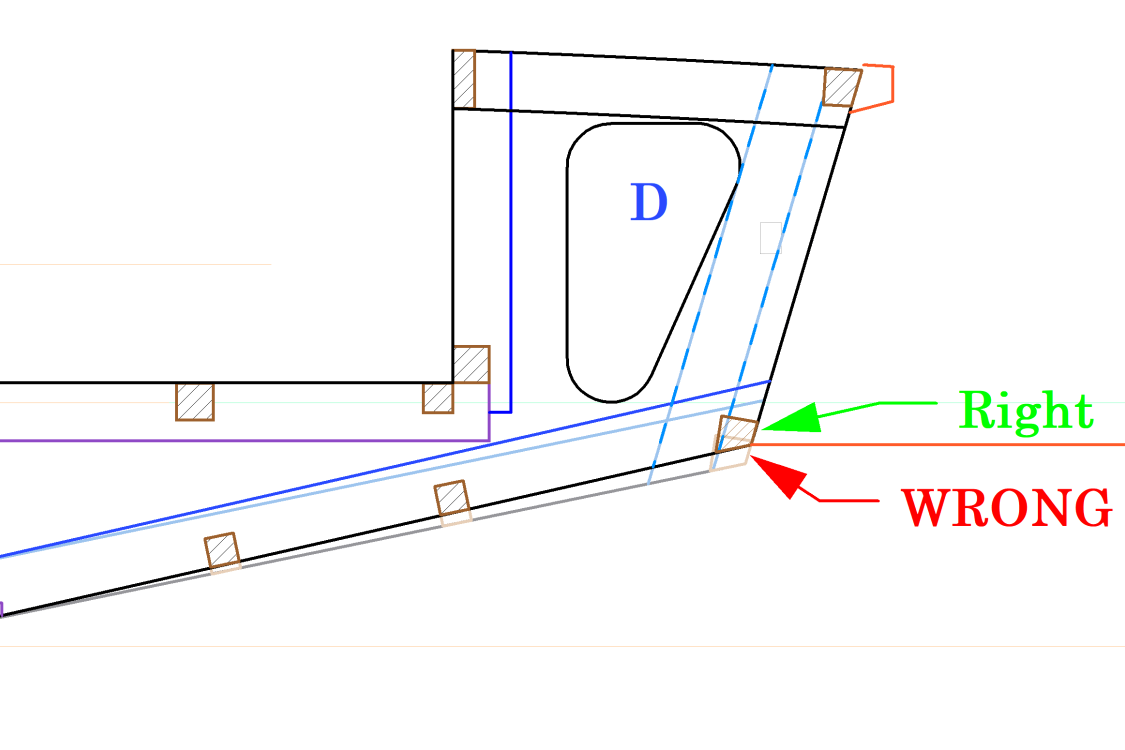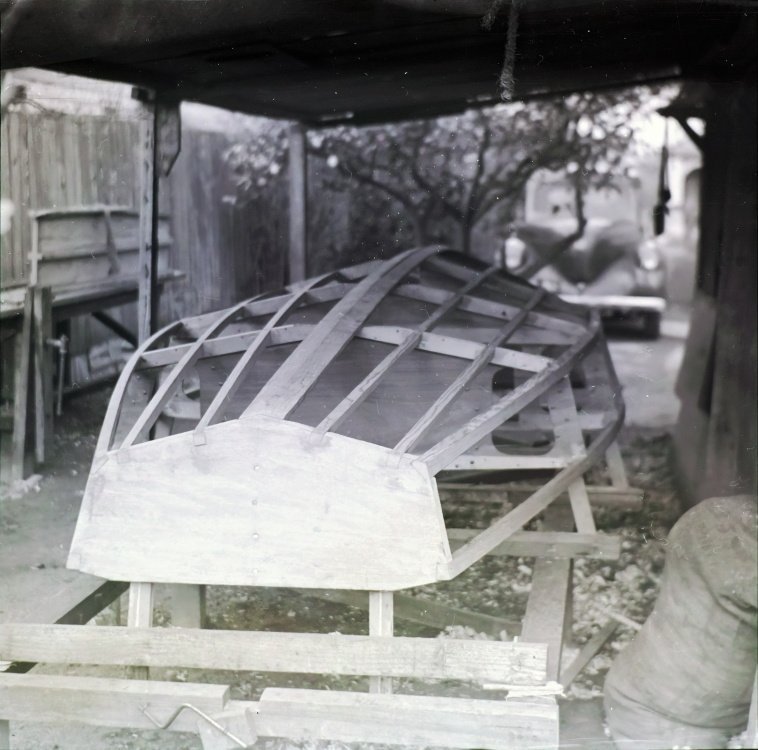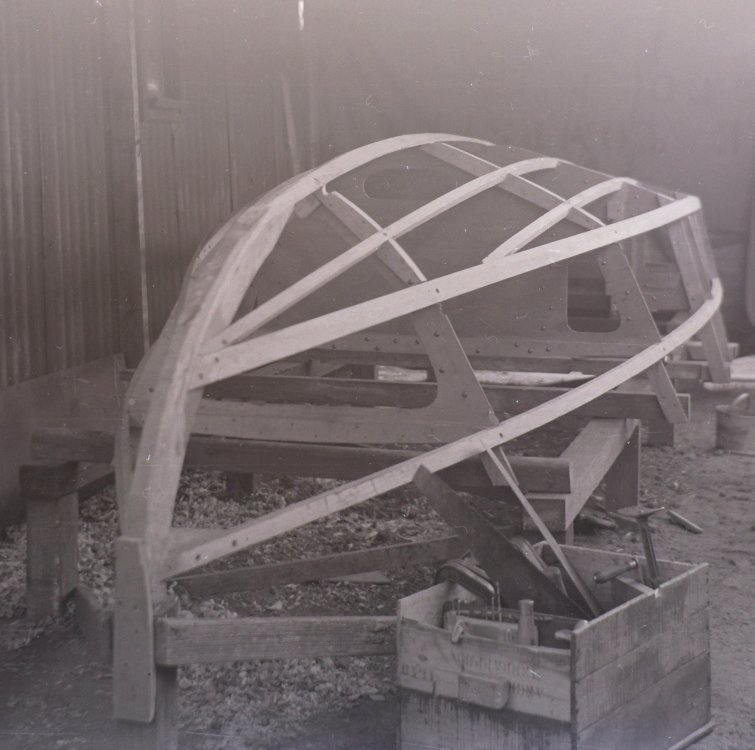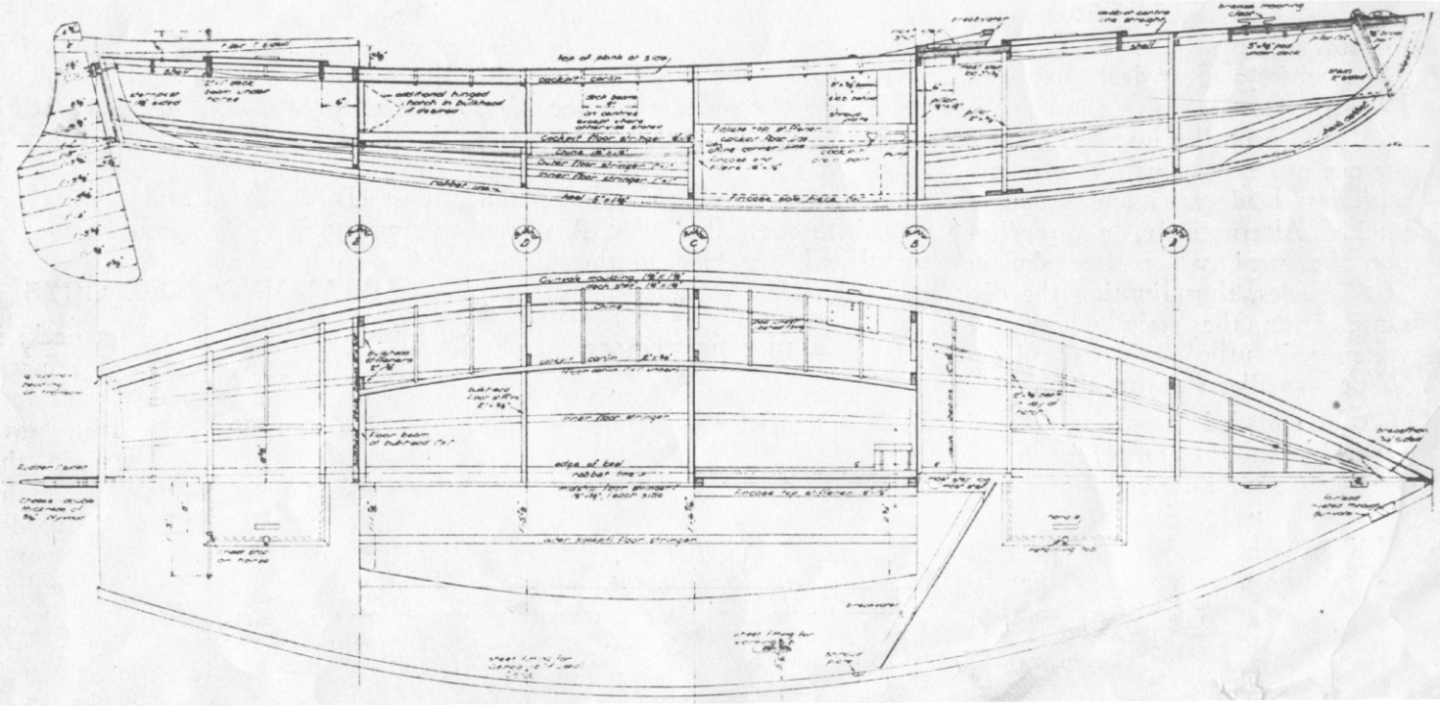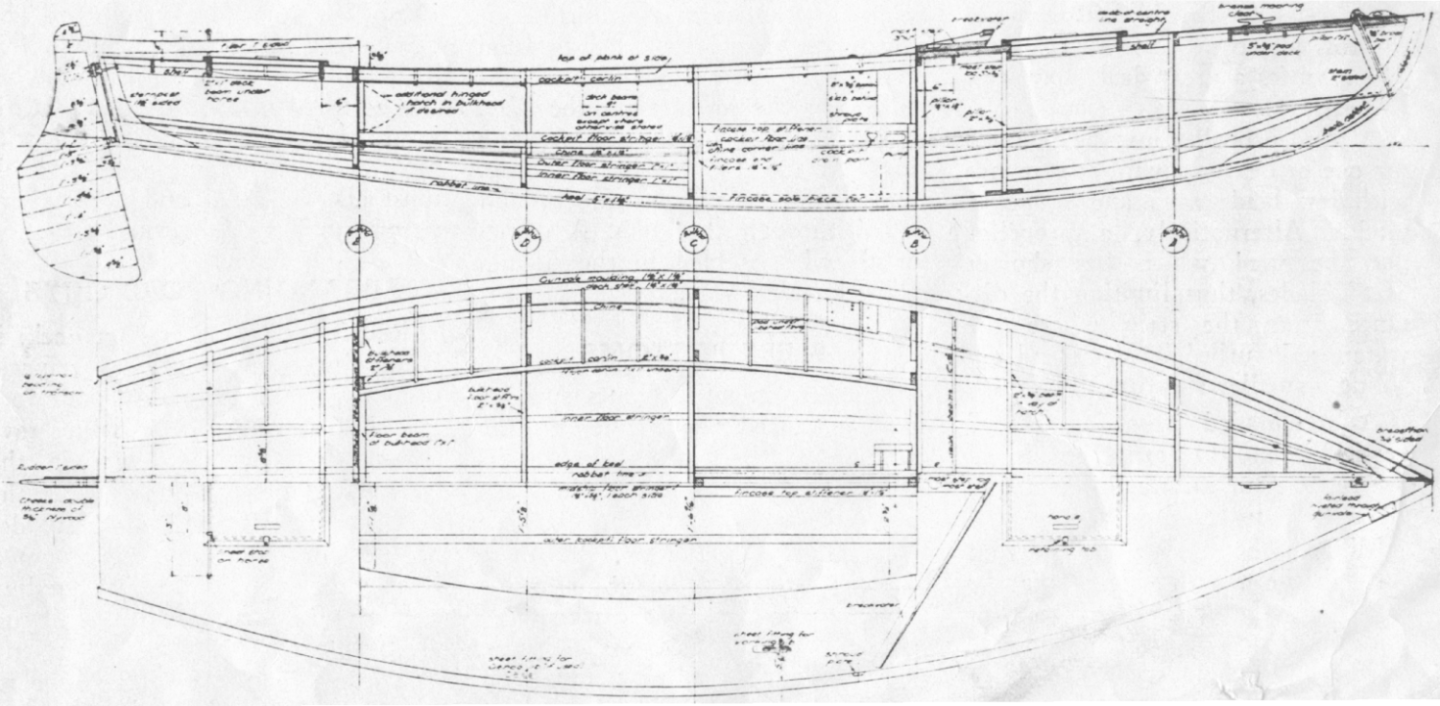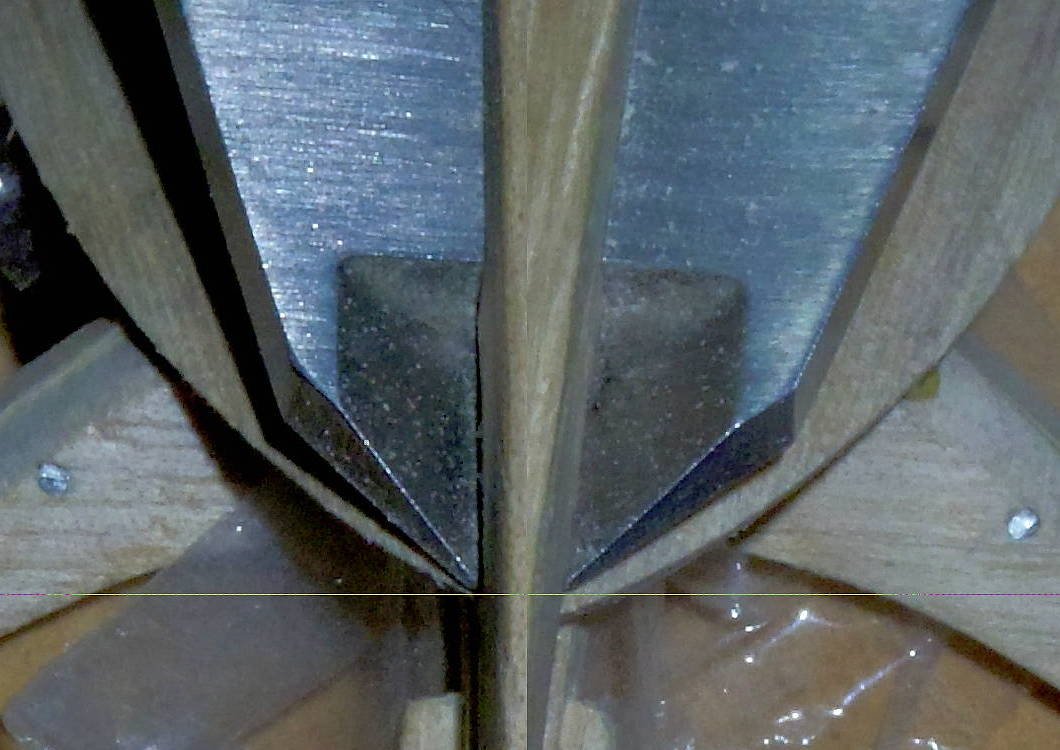-
Posts
967 -
Joined
-
Last visited
Content Type
Profiles
Forums
Gallery
Events
Everything posted by iMustBeCrazy
-
Something a little different. Hopefully this will be a quick build at least up to a painted hull, I only have until Easter to get that far. Some may be wondering why I'm not working on my Bounty launch. Kitty was built in 1949 by my father and three mates and was going to be my next build after the launch but the son of one of the builders will be visiting at Easter so the launch is on the back burner. I have been playing with drawings for a few months based on photocopies of photocopies of the 'plans' in a magazine, some incomplete drawings my father did in preparation for making a model, some photographs of the build and, fortunately, the materials list.
-
Unfortunately I stuffed up either my measurements or my gluing of the landing strakes and the sheers don't overlap the landing strakes properly. There should be a 1" (scale 1/16") overlap the full length but I finished up with zero overlap at E, F, G and at the transom. The stem and midships are fine. I Ummed and Ahhed for some time and finally decided to add some packers to make the sheer sit at the same height it would be if it overlapped and then when I fit the fender it will hide everything.
-
Ok, I'm back. I got some insect repellent in my eyes and couldn't focus well enough for close work even with magnifying glasses. Better now. Prior to that I fitted the landing strakes. These are clinker as mentioned above. This time I used a stepped rebate for the gains rather than the 45°s that I used on the small cutter. I glued depth stops to a pair of blades (you need a left and a right) and cut rebates going down to half the thickness of the planks. It worked well and was easier than the 45°.
-
I'm not that old! The only real problem is you need to come up to the forward thwart. Some examples: https://www.rmg.co.uk/collections/objects/rmgc-object-66671 https://www.rmg.co.uk/collections/objects/rmgc-object-67761 Based mainly on the above and other contemporary models, the quarterdeck was likely solid (no gaps between planks), the foredeck either solid or a grating. Based on experience, the rowers need somewhere to brace their feet. Either raised floorboards or footrests. There will be exceptions.
-
Just a minor update, planking continues slowly. Although I've decided that the originals hull was most likely painted white I'm going leave mine natural with a coating of shellac, the timber is quite pale so it's 'close' to white and it will show off my work. And a better visualisation of Allan's project
-
Haven't we all? Taking a stab at it, from the comment about being short of white (paint) for the small cutter I'd guess all the boats were painted white (impress the natives) with the sheer probably painted in a colour that somehow matched the Bounty. Sometime before leaving Tahiti the bottom of the launch was painted with half pitch half tar (probably coal pitch (black) and pine (or Stockholm) tar (anything from light amber to dark brown)). The effect was probably a brown/black wash over the white leaving the launch rather dirty/shabby in appearance which would do little to impress the natives and may have increased the chance of being attacked. Model Shipways kit (green) v ZAZ7361 the drawing from the books:
-

Lapwing 1816 Revenue Cutter
iMustBeCrazy replied to iMustBeCrazy's topic in CAD and 3D Modelling/Drafting Plans with Software
Sorry to say, no. I realised I didn't know enough about the construction of ships (or their drawings) so I started working on drawings of boats and am working my my back up. I am learning and expect to come back to Lapwing sometime. -
I have to agree, without giving Tim too bigger a head, I have seen worse from people on their second or third kit. Well done. Of course there are issues (just to keep that head from swelling too much), the gaps, the bows, the transom, but I have no doubt that the next one will be even better. Tim, make up a brace to hold the sides in until you have fitted the thwarts (see my small cutter #27). Inwale (4x1mm strip running along the inside of the frames at the top of the sheer), breasthook and transom knees. All this adds strength. Then work from the bottom up. Don't get too obsessed with tools, it really doesn't take much with a kit and you can buy or build them as you go. Please do start a build log when you get the Launch, there are a few tricks and traps you will want to avoid.
-
A bit of a weird update. 1st a collage of some of the steps of making a plank. 1/ Using tape to mark edge. 2/ Stinking tape on board. 3/ VERY roughly marking the other edge. 4/ roughly cut out. 5/ Roughly sanded and test fitted, high points (between arrows) marked. 6/ High points lightly sanded, test fitted again, new high points marked. After that I got more serious, took the tape off and marked in pencil, added a VERY important alignment mark. After I fitted that pair of strakes It was time for some checking. First I found a new use for calipers, you can use them to compare both sides of the keel, I found the third strake starboard side had crept forwards about 0.5mm. Not bad but fixed anyway. I then redid the plank width calculations for the area remaining, the worst was at frame 'D' where the remaining strakes needed to be 0.3mm narrower which is pretty good.
About us
Modelshipworld - Advancing Ship Modeling through Research
SSL Secured
Your security is important for us so this Website is SSL-Secured
NRG Mailing Address
Nautical Research Guild
237 South Lincoln Street
Westmont IL, 60559-1917
Model Ship World ® and the MSW logo are Registered Trademarks, and belong to the Nautical Research Guild (United States Patent and Trademark Office: No. 6,929,264 & No. 6,929,274, registered Dec. 20, 2022)
Helpful Links
About the NRG
If you enjoy building ship models that are historically accurate as well as beautiful, then The Nautical Research Guild (NRG) is just right for you.
The Guild is a non-profit educational organization whose mission is to “Advance Ship Modeling Through Research”. We provide support to our members in their efforts to raise the quality of their model ships.
The Nautical Research Guild has published our world-renowned quarterly magazine, The Nautical Research Journal, since 1955. The pages of the Journal are full of articles by accomplished ship modelers who show you how they create those exquisite details on their models, and by maritime historians who show you the correct details to build. The Journal is available in both print and digital editions. Go to the NRG web site (www.thenrg.org) to download a complimentary digital copy of the Journal. The NRG also publishes plan sets, books and compilations of back issues of the Journal and the former Ships in Scale and Model Ship Builder magazines.




